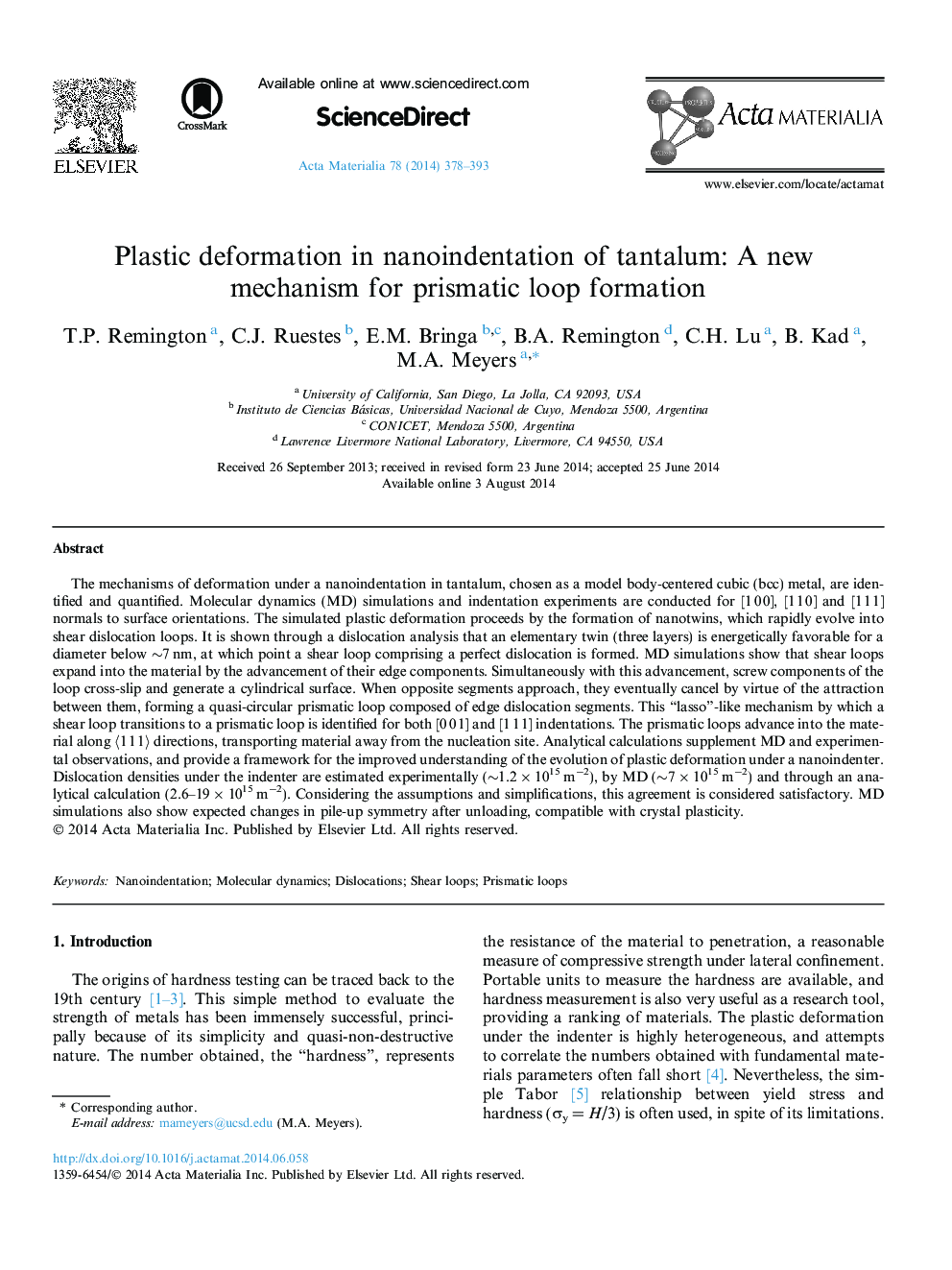| کد مقاله | کد نشریه | سال انتشار | مقاله انگلیسی | نسخه تمام متن |
|---|---|---|---|---|
| 1445584 | 1509598 | 2014 | 16 صفحه PDF | دانلود رایگان |
The mechanisms of deformation under a nanoindentation in tantalum, chosen as a model body-centered cubic (bcc) metal, are identified and quantified. Molecular dynamics (MD) simulations and indentation experiments are conducted for [1 0 0], [1 1 0] and [1 1 1] normals to surface orientations. The simulated plastic deformation proceeds by the formation of nanotwins, which rapidly evolve into shear dislocation loops. It is shown through a dislocation analysis that an elementary twin (three layers) is energetically favorable for a diameter below ∼7 nm, at which point a shear loop comprising a perfect dislocation is formed. MD simulations show that shear loops expand into the material by the advancement of their edge components. Simultaneously with this advancement, screw components of the loop cross-slip and generate a cylindrical surface. When opposite segments approach, they eventually cancel by virtue of the attraction between them, forming a quasi-circular prismatic loop composed of edge dislocation segments. This “lasso”-like mechanism by which a shear loop transitions to a prismatic loop is identified for both [0 0 1] and [1 1 1] indentations. The prismatic loops advance into the material along 〈1 1 1〉 directions, transporting material away from the nucleation site. Analytical calculations supplement MD and experimental observations, and provide a framework for the improved understanding of the evolution of plastic deformation under a nanoindenter. Dislocation densities under the indenter are estimated experimentally (∼1.2 × 1015 m−2), by MD (∼7 × 1015 m−2) and through an analytical calculation (2.6–19 × 1015 m−2). Considering the assumptions and simplifications, this agreement is considered satisfactory. MD simulations also show expected changes in pile-up symmetry after unloading, compatible with crystal plasticity.
Journal: Acta Materialia - Volume 78, 1 October 2014, Pages 378–393
